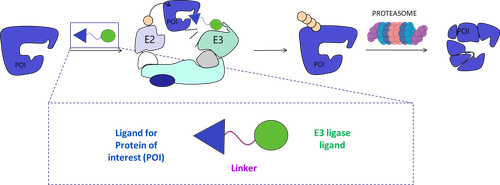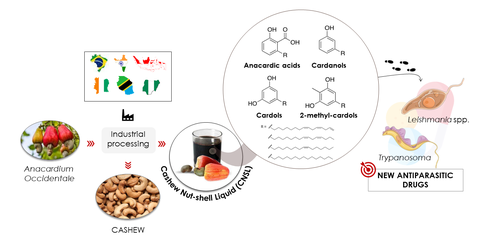
Fig. 1: Schematic representation of the PROTAC mechanism of action
Research Themes
Development of chimeric small molecules as multi-target-directed ligands (MTDLs) to contrast the multifactorial nature of neurodegenerative diseases (e.g., Alzheimer’s Disease, Amyotrophic Lateral Sclerosis, ALS) or as bimodal derivatives for simultaneous therapy and fluorescence imaging in prion disease.
An innovative class of chimeric molecule that have recently attracted our attention is that of degraders. We particular focus on two types of such heterobifunctional small molecules, i.e., the PRoteolysis TArgeting Chimeras (PROTACs) and RIBOnuclease-TArgeting Chimera (RIBOTACs).
PROTACs feature a ligand for the protein of interest (POI), and a ligand that recruits an E3 ubiquitin ligase connected via a suitable linker; similarly, RIBOTACs are composed of an RNA of interest (ROI)-binding compound conjugated to a second small molecule that recruits and locally activates RNase L. The formation of a ternary complex between the POI (or ROI) and the E3 ligase (or RNase), provoke target degradation. As such, the use of binary degraders is a revolutionary therapeutic modality, which is driving a radical rethink of small molecule-based drug discovery. We have applied this new modality to infections by Leishmania and by Flavivirus (like West Nile Virus, Zika virus and Dengue virus). In addition, we have recently pursued PROTAC-induced glycogen synthase kinase 3β degradation as a potential therapeutic strategy for Alzheimer’s Disease (Fig.1).

